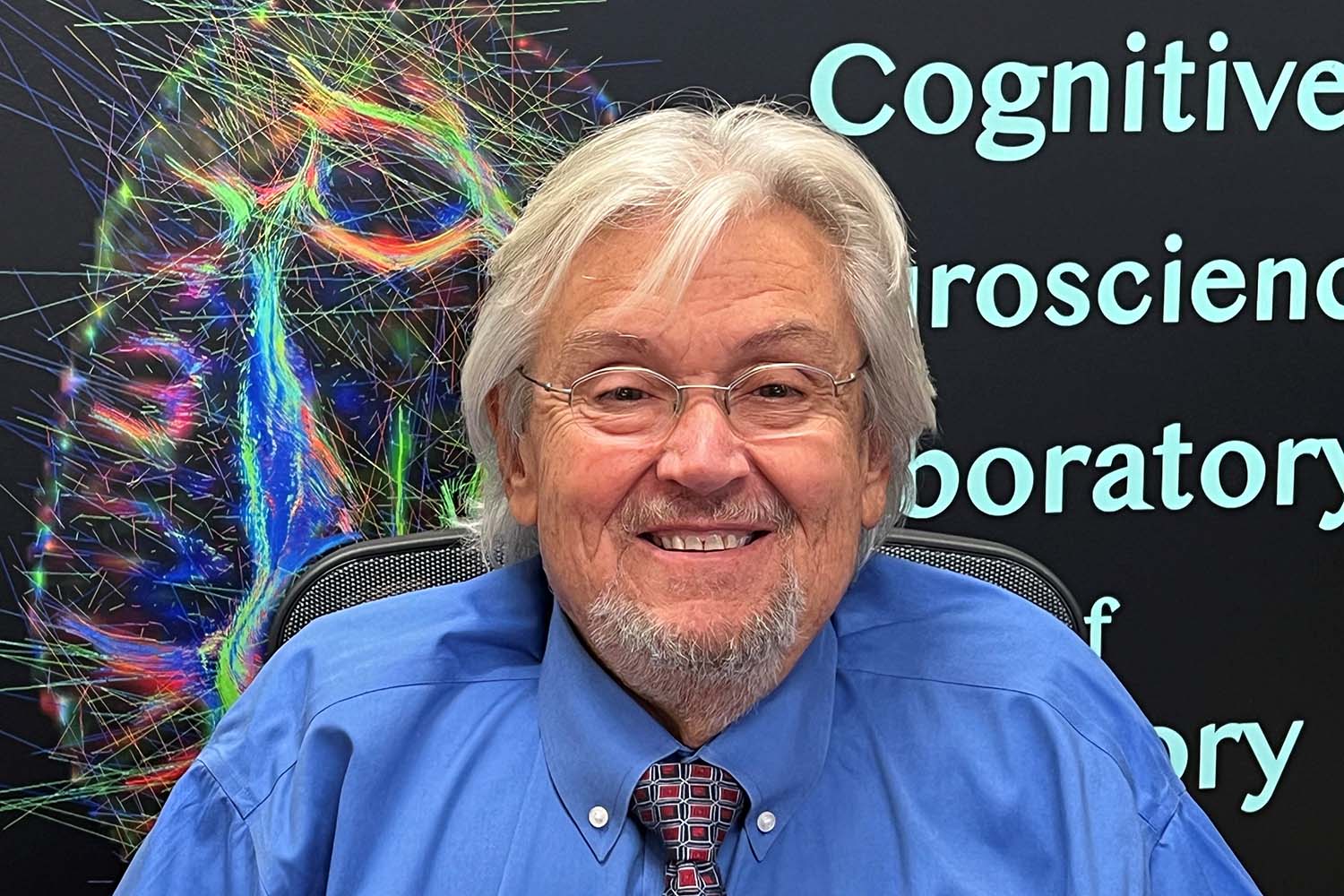
A University of Texas at Dallas researcher has received funding from the Department of Defense to test whether low-level electrical stimulation of the brain can address a cognitive issue in patients with multiple sclerosis (MS).
Dr. John Hart Jr., the Distinguished Chair in Neuroscience and a professor in the School of Behavioral and Brain Sciences, received a three-year, $1.6 million grant from the Defense Health Agency to validate the effectiveness of high-definition transcranial direct current stimulation (HD-tDCS) for MS patients who are struggling to recover their ability to retrieve words.
“One of the fastest-growing long-term disabilities in MS patients is cognitive dysfunction,” Hart said. “As we get better at treating the main symptoms that define MS, such as ataxia and other physical disabilities, patients’ lives grow longer, and we’re seeing what other problems they develop further down the line. Cognitive dysfunctions are becoming one of the biggest reasons for disability from work in MS patients.”
Using functional MRI and electroencephalography, Hart’s team in the Cognitive Neuroscience Laboratory of Memory and Language has pinpointed patterns of brain activity that appear crucial for word retrieval.

“We’ve mapped out certain brain regions and have defined circuits that have to fire in a particular pattern to retrieve words, memories or ideas. Any disease that hits such a circuit can make you slower at getting words or intermittently unable to retrieve them,” said Hart, a physician-scientist who is also professor of neurology and psychiatry at UT Southwestern Medical Center. “We’ve had some promising preliminary results using our approach to target the deficit in retrieving words in MS patients.”
Brain cells communicate with each other using rapid electrical impulses. In HD-tDCS, low-intensity electric currents are targeted to specific areas of the scalp, causing stimulation in brain regions close to the surface, with the goal of increasing the excitability of individual neurons. A cap covering the subject’s head is used to safely, painlessly deliver the current.
“When you turn on this current, you have immediate changes to the neurons in the neural system,” said senior research scientist Dr. Michael Motes, Hart’s longtime collaborator. “After repeated exposure, you then can make durable changes to the system itself that affect retrieving memories.”
Although promising, HD-tDCS has yet to be validated as a clinical treatment. Researchers like Hart and Motes are working to refine the technique to determine what works best.
“This is the first phase of determining whether the present protocol and formula — in terms of the number of sessions at what frequency to what location, and so on — lead to long-term change,” Hart said. “We are still in a phase where we’re validating that this is an effective treatment to use for this purpose.”
Motes said that patients in early tests of the technique have shown some cognitive improvement, but the mechanisms underlying those changes remain unclear.
“Are we affecting word-finding specifically, or are we affecting other cognitive processes, like executive function, that support word-finding?” he said. “The preliminary data include some evidence suggesting related processes are affected.”
“We’ve mapped out certain brain regions and have defined circuits that have to fire in a particular pattern to retrieve words, memories or ideas. Any disease that hits such a circuit can make you slower at getting words or intermittently unable to retrieve them.”
Dr. John Hart Jr., the Distinguished Chair in Neuroscience and a professor in the School of Behavioral and Brain Sciences
The researchers also want to determine how long any benefits might last. In previous HD-tDCS studies on patients with traumatic brain injuries, Hart and his team found a significant response eight weeks after therapy.
“That’s a strong window for a nonpharmacologic treatment,” Hart said. “As more studies occur, we’ll be looking at effect duration closely to determine when people would need booster sessions, for instance.”
Hart said there is no medication or therapy approved by the Food and Drug Administration for cognitive deficits related to MS, but potential pharmaceutical treatments could have drawbacks.
“Medications for this would carry risks of side effects and interactions, and MS patients are very likely to already be on a host of medications for other aspects of the disorder,” he said. “HD-tDCS is relatively inexpensive and could potentially be added to other treatments.”
